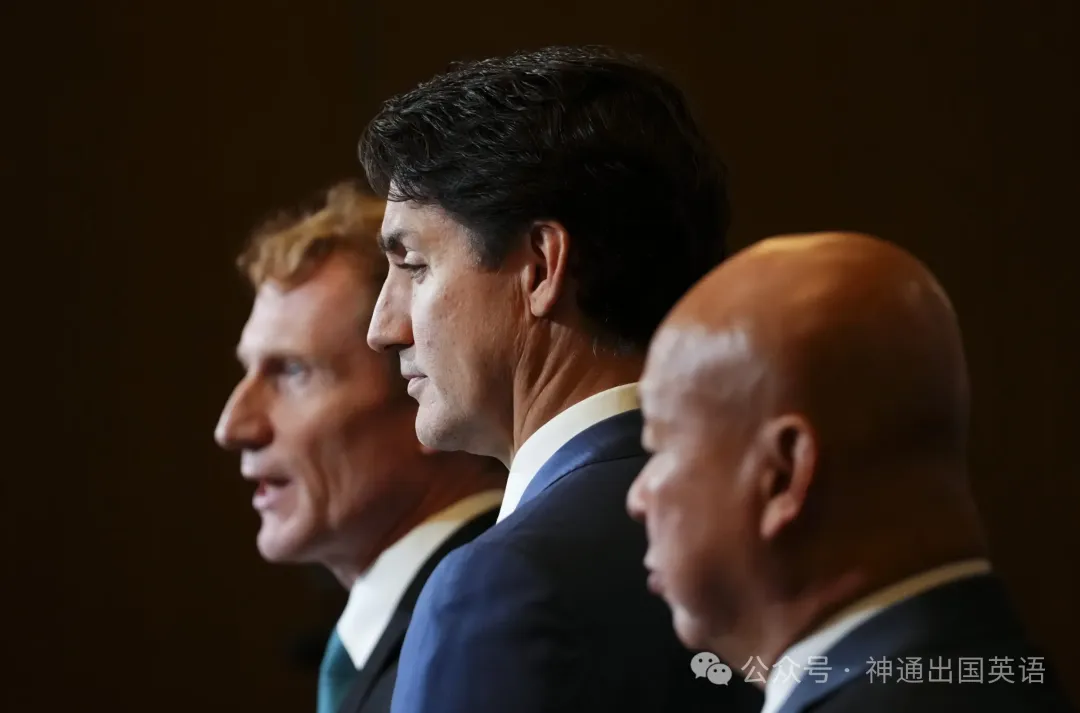加拿大将减少明年新永久居民的数量,削减幅度为21%,这一消息由加拿大总理特鲁多和移民部长马克·米勒在今天宣布。
Canada will reduce the number of new permanent residents next year by 21 percent, the announcement was made today by Prime Minister Justin Trudeau and Immigration Minister Mark Miller.
It's part of a series of major tweaks to immigration targets by the Trudeau government to slow Canada's population growth, which is on the verge of spiraling out of control.

“We've announced that we're going to reduce immigration over the next three years, and that's going to lead to a pause in population growth over the next two years,” Trudeau said at a press conference on Thursday. “We didn't quite get the balance right.”

加拿大2015-2027年年度移民目标额度变化情况
The federal government is abandoning its original plan to maintain the current immigration target in 2026, according to a newly released government notice. Under the 2025-2027 Immigration Levels Plan, Canada will reduce the number of new permanent residents from 500,000 to 395,000 in 2025.
Next year, 40 percent of new permanent residents will come from temporary residents already living in Canada, Miller said in making the announcement.
By 2026, that number is expected to decrease further to 380,000 and by 2027 to 365,000, the federal government said.
Trudeau said that while Canada needed more workers during the epidemic, labor market conditions have now changed.
According to a plan developed last year, the federal government originally intended to accept 485,000 new permanent residents in 2024, 500,000 in 2025, and maintain the 500,000 target in 2026, with the expectation of achieving “stabilization”.
Thursday's plan also lays out targets for temporary residents, aiming to keep the number of temporary residents below 5 percent of the total population. Canada plans to take in 445,901 temporary residents by 2025 and reduce them to 445,662 by 2026.
However, by 2026, there will be a “modest increase” in the number of temporary residents by 17,439 to 463,101.

Miller added that the number of study permits issued in Canada is down 43 percent this year.
Reduced immigration could reduce Canada's housing needs by as many as 670,000 units by the end of 2027, he said.
“That means we don't have to build another 670,000 homes before then,” he said.
Miller said the focus of the permanent resident program will be on “those who are already here.”
“We are an open country, but not everyone can come to this country,” he said.
“While it is clear that our economy needs new immigrants, we are also seeing pressures on the country and must adjust our policies accordingly,” Miller said.
He added: “These changes will make immigration policy work better for our country, ensuring everyone has access to quality jobs, housing and supports. We have listened to the people of Canada and will continue to protect the integrity of our system and grow our population responsibly.”
The downward revision of the immigration target is the latest step in a series of adjustments by the government. In March, the federal government first set a target for temporary residents.
Miller said the measure is designed to ensure the growth of temporary residents is “sustainable.”
Miller also said that as of 2023, Canada already has 2.5 million temporary residents, which is 6.2 percent of the total population. Over the next three years, the government plans to reduce that to 5 percent.
Immigrant rights groups have warned that cuts to the number of permanent residents will leave the most vulnerable immigrant workers with fewer pathways to residency.
“We are witnessing one of the most serious rollbacks of immigrant rights in Canada's history,” said Syed Hussein, spokesperson for the Immigrant Rights Network. “Cuts to the number of permanent residents are a direct hit to migrant workers, who will be forced to remain in temporary status or become undocumented immigrants, further pushed into exploitative work.”






